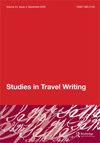Anxious Journeys: Twenty-First-Century Travel Writing in German
Q2 Arts and Humanities
引用次数: 0
Abstract
tour narratives play in consolidating the generic norms for Highland travel writings in the period. Pennant’s works are a combination of both a topographical survey and a full account of “curious travel”, based on miscellaneous knowledge gained during his actual journeys including engravings by his “artist servant” Moses Griffith. Their legacy is manifest, for example, as an “elusive presence” in the better-known Dr Johnson’s Journey to the Western Islands (1775). Johnson’s work was inspired by Pennant’s, yet at the same time called into doubt what Pennant describes as a unionist vision incorporating “North” and “South” Britain. In Chapter Five, Leask calls attention to the presence of a female landscape aesthetics in Dorothy Wordsworth’s Recollections of a Tour in Scotland and Sarah Murray’s Companion and Useful Guide to the Beauties of Scotland (1799), both unusual in the context of the male-dominated picturesque tours of the 1780s. The most intriguing of the authors he discusses is Dorothy Wordsworth, in whose writing he finds a self-effacing aesthetic subject and an empathy with local people developed across lines of nationality and class. Different aspects of local landscapes and people were foregrounded by these women tourists’ works, whose underlying values reflected, confirmed and challenged the conventional framework of masculine tourist narratives about the Highlands. The two final chapters revisit the relationship between “romance” and “improvement” in Walter Scott’s verse romances and novels, highlighting their notable contribution to creating the romanticised view of the Highlands which influenced the imaginations of a mass readership. In summary, Leask addresses more than a century’s worth of literary and visual representations of the Highlands, and provides his readers with a rich and nuanced picture of the Scottish Highland tour of 1720–1830. Readers are not only informed of rapid and forced modernisation brought to the region as perceived by the travellers, but are also further inspired to think about the relations between landscape, improvement schemes, and the shaping of British, Scottish, and Gaelic identities.焦虑的旅程:21世纪德语旅行写作
本文章由计算机程序翻译,如有差异,请以英文原文为准。
求助全文
约1分钟内获得全文
求助全文
来源期刊

Studies in Travel Writing
Arts and Humanities-Literature and Literary Theory
CiteScore
0.40
自引率
0.00%
发文量
13
期刊介绍:
Founded in 1997 by Tim Youngs, Studies in Travel Writing is an international, refereed journal dedicated to research on travel texts and to scholarly approaches to them. Unrestricted by period or region of study, the journal allows for specific contexts of travel writing to be established and for the application of a range of scholarly and critical approaches. It welcomes contributions from within, between or across academic disciplines; from senior scholars and from those at the start of their careers. It also publishes original interviews with travel writers, special themed issues, and book reviews.
 求助内容:
求助内容: 应助结果提醒方式:
应助结果提醒方式:


